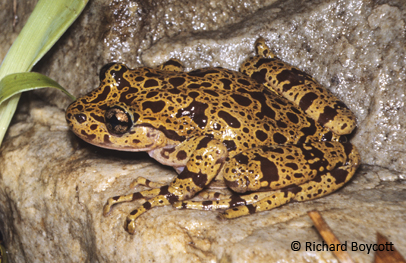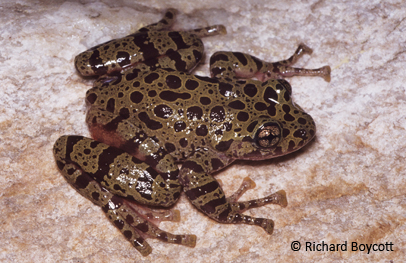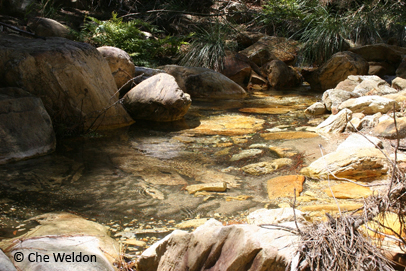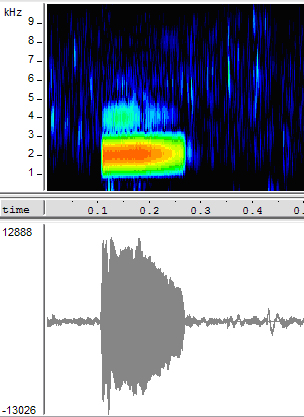Our EDGE Fellow for the South African ghost frogs, Werner Conradie, has just sent us this fascinating account of how frog calls provide vital clues about what is going on in their life and where they are hiding. Ribbiting stuff!
Frogs can be identified by their calls just like birds. In fact, frogs will more often be heard than seen. This feature, as well as the fact that their calls are species-specific, makes vocalisations an ideal identification tool in distinguishing between different species. Vocalisation in anuran (or frog and toad) amphibians serves numerous functions. The call produced by a male is a local broadcast, revealing his species identity, sex, size, and reproductive status to potentially interested females. Together with this, males use calls to asses the position and threats of other vocalising males. Although frogs have a small vocabulary where calls are concerned, they have numerous meanings. Normal mating advertisement calls for attracting females, aggression (territorial) calls made towards other males, release calls when males are mistaken as females by other males, and distress calls when in danger are all vocalised uniquely by different frog species. Of all these different calls, the mating call is most often heard.
During the last survey of the ghost frogs, I was privileged to record the advisement call of Hewitt’s ghost frog. Frogs mostly call at night, but this call was recorded at 12:00 on the afternoon of 21 September 2009. The air temperature was 17°C and water temperature 14°C. A total of three calling males where recoded in the study area, form deep underneath rocks crevices with flowing water. Detecting the actual frog is made impossible as they flatten their body and squeeze into the smallest cracks. At night they move out into the open. A call transect is being set up to record the call density of males.
The following diagram depicts a spectrogram (above) and waveform (below) of the call of Hewitt’s ghost frog:
And if you want to hear the call for yourself, please click on the following sound file:



